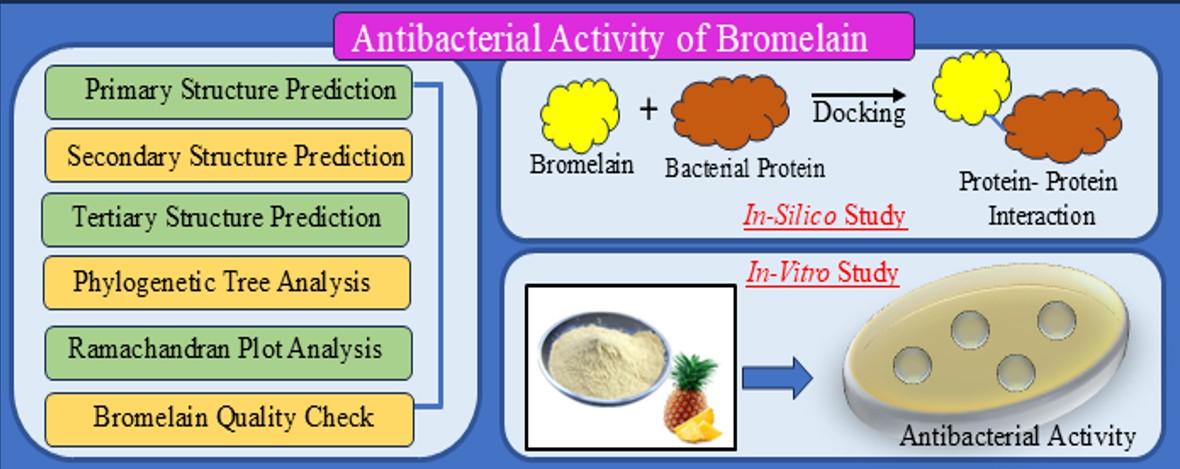Bromelain: Targeting dental biofilm through dual approach of protein interaction and in vitro validation

DOI:
https://doi.org/10.62110/sciencein.jist.2025.v13.1179Keywords:
Bromelain, Molecular Docking, Hydrophobic interaction, Protein-protein interaction, Antimicrobial activity, Dental plaque, Fibronectin binding protein B, oral care, Methicillin-Resistant Staphylococcus aureus, Pseudomonas aeruginosaAbstract
Bromelain, a proteolytic enzyme isolated from pineapple, is renowned for its therapeutic applications. The present work was designed to investigate the anti-microbial potential of bromelain against dental plaque-causing microbes via in silico and in vitro studies. Firstly, in silico study was conducted where docking between bromelain and eight microbial growth-promoting proteins: Third fibronectin F1 module, Antigen I/II, SarA, Fibrinogen binding protein, Fibronectin binding protein B, Fibronectin binding protein A, AgrA, and SasG, was performed. This was followed by an in vitro study to validate the antimicrobial potential of bromelain against dental plaque-forming microbes, including Pseudomonas aeruginosa, Bacillus cereus, Staphylococcus aureus, and Bacillus velezensis. It was observed that bromelain had the strongest binding affinities with Antigen I/II (-643.133 kcal/mol) and Fibronectin binding protein B (-612.445 kcal/mol). The in vitro results showed that this enzyme had an inhibitory effect against test microorganisms, with maximum inhibition zone of 30.33 ± 0.29 and 41.90 ± 0.004 mm² at 300 and 400 µg/mL against B. velezensis. The test results were comparable to streptomycin (control) in several cases. Both in silico and in vitro results are in close agreement, indicating antimicrobial properties and the mode of action of bromelain against targeted pathogens revealing its proteolytic activity that helps in dental plaque destruction by degrading the biofilm. Its plant origin also enhances its suitability in oral care.
Downloads
Downloads
Published
Issue
Section
URN
License
Copyright (c) 2025 Gauresh Sharma, Parvej Ahmad, Archana Vimal, Reena Vishvakarma

This work is licensed under a Creative Commons Attribution-NonCommercial-NoDerivatives 4.0 International License.
Rights and Permission







